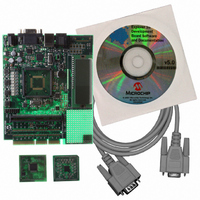DM240002 Microchip Technology, DM240002 Datasheet - Page 23

DM240002
Manufacturer Part Number
DM240002
Description
BOARD DEV EXPLORER 16 44-PIN
Manufacturer
Microchip Technology
Series
Explorer 16 44-pinr
Type
MCUr
Datasheet
1.DM240002.pdf
(42 pages)
Specifications of DM240002
Contents
Explorer 16 Dev Board, PIC24FJ64GA004 and dsPIC33FJ32GP204 PIM Modules
Processor To Be Evaluated
PIC24FJ128GA010, dsPIC33FJ256GP710
Processor Series
PIC 24, dsPIC33
Data Bus Width
32 bit
Interface Type
RS-232
Silicon Manufacturer
Microchip
Core Architecture
PIC, DsPIC
Core Sub-architecture
PIC24, DsPIC33
Silicon Core Number
PIC24F, DsPIC33F
Lead Free Status / RoHS Status
Lead free / RoHS Compliant
For Use With/related Products
dsPIC30, dsPIC33, PIC32, PIC24FJ, PIC24HJ
Lead Free Status / Rohs Status
Lead free / RoHS Compliant
Available stocks
Company
Part Number
Manufacturer
Quantity
Price
Company:
Part Number:
DM240002
Manufacturer:
Microchip Technology
Quantity:
135
Company:
Part Number:
DM240002
Manufacturer:
MICROCHIP
Quantity:
12 000
© 2007 Microchip Technology Inc.
3.2.4
This lesson shows how to configure the ADC, run a conversion, read the analog voltage
controlled by the potentiometer (RP1) on the board, and display the high order 8 bits
on the display.
The PIC16F887 has an on-board Analog-to-Digital Converter (ADC) with 10 bits of res-
olution on any of 14 channels. The converter can be referenced to the device’s V
an external voltage reference. The 44-pin Demo Board references it to V
by the PICkit 2 Microcontroller Programmer. The answer from the ADC is represented
by a ratio of the voltage to the reference.
Converting the answer from the ADC back to voltage requires solving for V.
Two of the three factors on the right side of the equation are constants and may be cal-
culated in advance. This eliminates the need to actually divide, but still requires fixed
or floating point multiply to solve the equation on the fly.
However, sometimes, such as when reading a sensor, calculating the voltage is only
the first step. There may be additional math to calculate the meaningful data from the
sensor. For example, when reading a thermistor, calculating the voltage is only the first
step on the way to getting the temperature.
There are other means to convert ADC values, including a straight table look-up or a
piece-wise linear interpolation. Each of these represents different speed/memory
trade-offs.
The schematic (Appendix A. “Hardware Schematics”) shows the wiper on the poten-
tiometer is connected to pin RA0 on the PIC16F887.
Here’s the checklist for this lesson:
• Configure PORTA as an analog input, TRISA<0> = 1, ANSEL<0> = 1
• Select justification and V
• Select clock scaling and channel in ADCON0.
ADC = V/V
V = ADC/1023 * V
Lesson 4: Analog-to-Digital
REF
* 1023
REF
REF
44-Pin Demo Board Lessons
source in ADCON1.
DS41296B-page 19
DD
as provided
DD
or












